Self-medication

Introduction
How many of us have gone to the chemist to buy the same medicine that we had taken before because it had worked well? How many times have we followed the advice of a family member or someone we know that recommends we take a particular medicine because they had tried it and it worked well?
Healthcare professionals are starting to become quite concerned about the fact that people are more and more frequently deciding to take medicine themselves to treat different complaints and illnesses.
Within this group of people that are autoadministered medication there is ones that it do responsibly, discussing the slight diseases or illnesses that they have suffered previously through medicines that you can acquire without recipe (EFP), but there is a high percentage (28%) of people that it do in an indiscriminate way.
Definitions
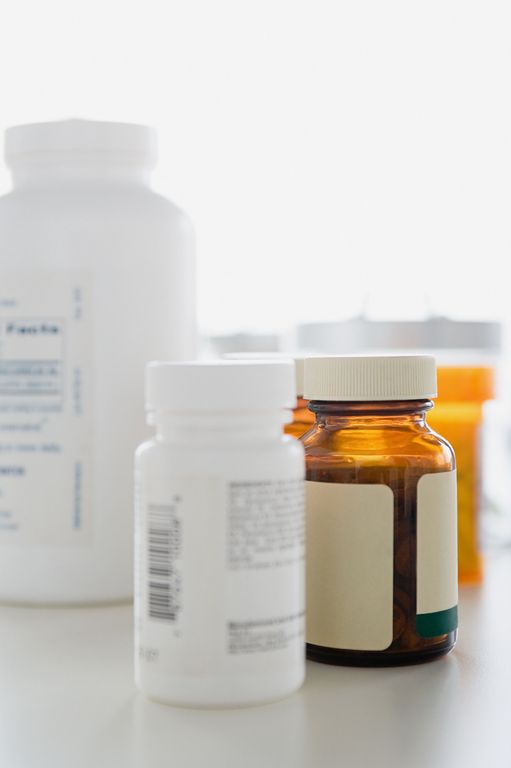
We are going to define a series of concepts that will help our understanding of this article.
Medicine
Chemical compound that interacts with the body and provides effective methods for treating and preventing illnesses and symptoms.
Dosage form
Medicines are given the form that is most suitable for them to be administered, i.e. medicines can take the form of pills or tablets, drinks or syrups, capsules, for injecting, etc.
Adverse effects
Before being commercialised, medicines undergo long authorisation and clinical trial processes to study both their beneficial and their adverse effects; however, when the general population takes the medicine, infrequent effects may be detected or effects may appear when there is continued use.
Adverse effects are harmful, unintentional effects that appear when the medicine is taken in the correct dose according to age, weight, gender, etc. If it is suspected that a medicine may be causing a side effect, it is necessary to consult the doctor that has prescribed the medicine or else the pharmacist; they will be responsible for informing the regional Pharmacovigilance centre.
Self-medication
Self-medication refers to the responsible use of medicine by a person, usually when they know the symptoms of their illness and the medicine to treat it.
Self-prescription
This refers to the indiscriminate use of medicines without medical indication or prescription and without taking into account that all medicines are potentially dangerous if they are not used correctly.
OTC
“Advertising pharmaceutical Speciality” they are medications that they do not specify recipe for its distribution and, also, are subjected to advertising in the media. The EFP are the same thing that the medicines OTC (over the counter), that is, “medications of counter”. They are medications and ready authorised to lighten mild diseases such as:
- Dolores slight (headache, dental pains, muscular, menstrual)
- Intestinal nuisances (acidity of stomach, flatulence, estreñimiento, diarrhea)
- Cooled, states gripales
- Diseases of the footl (itches, insect bites)
- Etc.
Trade name
If you are not familiar with the health field and I say words like diclofenac, piroxicam or metamizol, I might as well be talking double Dutch, but if I say Voltaren, Feldene or Nolotil, you will know that I am saying the names of medicines. In the first case, I have called them by their generic name or active pharmaceutical ingredient, and in the second case, I have called them by their trade name.
When a substance is commercialised for use as a medicine, laboratories give it a generic name or international non-proprietary name registered by the WHO and a trade name. The same active ingredient can be commercialised by different laboratories, acquiring, therefore, different trade or brand names. (See table)
| Active ingredient | Trade names | Pharmacological group |
|---|---|---|
| Paracetamol |
|
Analgesic/antipyretic |
| Ibuprofen |
|
AINE |
| Amoxycillin |
|
Antibiotic |
| Diazepan |
|
Anxiolytic |
Generic medicines
They are medications that they have the same active constituent (ej.: ibuprofen, omeprazol, diazepam, etc.), the same dosage form (e.g. tablets, syrups, capsules, etc.) the same dose and the same bioequivalence (behaves identically and has the same effect on the body) as the original medicine with a brand name. A generic medicine is recognised because the name of the medicine has the initials EFG (Equivalent Generic Pharmaceutical) on the label. These medicines are as safe as brand medicines, as all the medicines approved by the Ministry of Health are subject to the same safety and effectiveness controls.
The difference between medicines with brand names and generic drugs is basically the cost savings; generic medicines are more economical due to the lower costs of research and development of the drug.
Benefits of self-medication
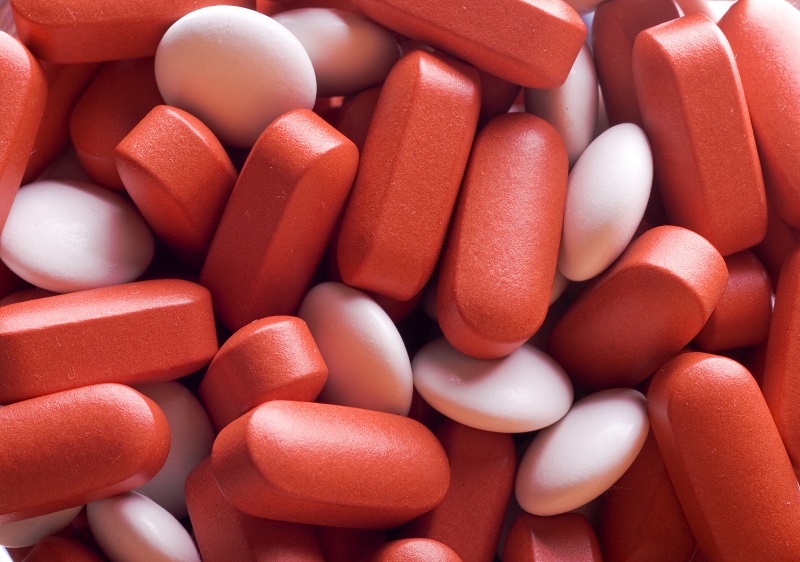
Self-medication is beneficial for curing or relieving many discomforts and minor health problems (mild neck, stomach and ear complaints, coughs, colds, some chronic pains, etc.) when the individual is well-informed in the use of safe, useful techniques and medicines. A well-informed patient about why a medicine is prescribed to him/her will willingly accept the doctor's decisions.
This independent way of taking medicine is complementary (and not in opposition, as doctor-patient contact should not disappear) to the work of the doctor, and will avoid travelling to the doctor's, waiting for appointments and other disadvantages of the healthcare service, which is often congested.
According to the World Health Organization (WHO), self-medication includes the following personal and social benefits:
- Relief or cure of minor health problems that can be done independently and complementary to the professional work of doctors.
- Increased independence and responsibility of people in taking care of their health.
- No need to wait for appointments, travelling to the doctor's, wasting time, etc.
- It helps to free up the health system, which is often congested by illnesses that can be treated independently.
Self-medication is a necessary reality. Information and health education can help so that it is carried out in a responsible and positive way and eradicates undesirable and dangerous self-medication.
Consequences of self-medication
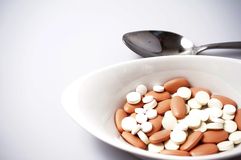
The Ministry of Health Care and Consummers' Affairs recently informed that 28% of undisguised Spaniards be consumer of medicines because of own initiative or advice foreign and nearly10% of hospitable emergencies are caused for the improper use of medications.
Without sufficient knowledge about the risks and benefits of medicines and on when and how to use them, often people do not obtain the expected clinical results and, also, they may suffer adverse effects such as headaches, dizziness or sleepiness or even serious complications of already existing illnesses.
The use of medicines with effects on our body can be beneficial, but it can also be toxic and even lethal if pre-existing illnesses or other medicines that the individual is already taking which could interact with the new medicine are not taken into account, or if the individual takes doses that are not adapted to their age, gender, size, etc.
One of the things that most worries health professionals for its frequency is the abuse of antibiotics; frequent use of antibiotics promotes bacterial resistance, which means that a different antibiotic is required.
There are many medicines for curing or relieving different illnesses and symptoms; however, we will focus on the most frequently used medicines.
Most common medicines
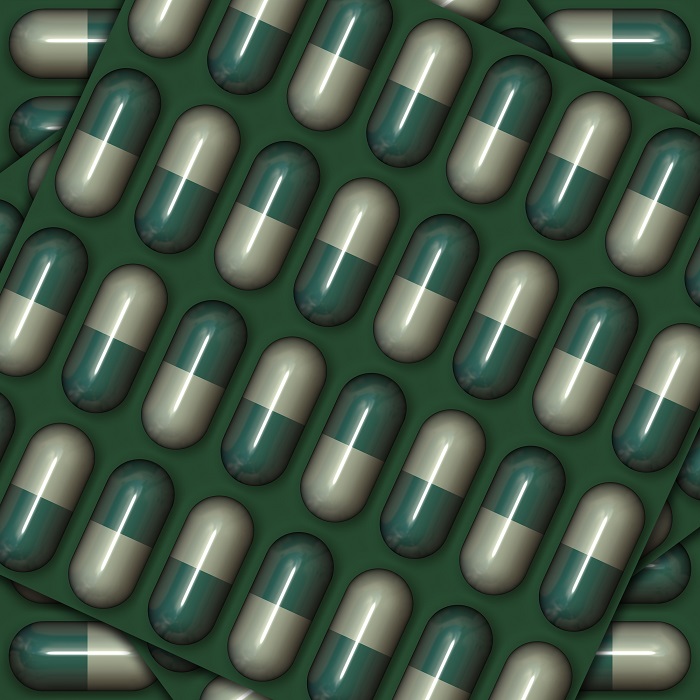
Antibiotics
An antibiotic is a chemical substance that has the capacity to inhibit the growth of microorganisms or to eliminate them.
The first antibiotic, penicillin, was discovered by Alexander Fleming in 1929. At the beginning of the 1940s, during the 2nd World War, it was necessary to treat infections caused by war injuries, and a huge investment was made into researching and purifying penicillin. Antibiotics were soon given widespread use, which meant therapeutic progress in treating infectious diseases.
The antibiotics act on infections arising from bacteria, but not on others as the flu or common colds that they are arising from virus; in these cases, they are completely inactive. Furthermore, every antibiotic acts in a specific way on a type of bacteriam but not against all of them; this is the spectra of activity, which is the capacity of an antibiotic to destroy a specific bacterium. Some are considered to be narrow-spectrum antiobiotics because they act specifically against a certain number of microorganisms; while on the other hand, others are considered to be broad-spectrum because they act against a wide variety of microorganisms.
Currently, the widespread use of antibiotics has highlighted that incorrect use often results in a lack effectiveness and an increase in resistance.
Microorganisms develop defenses against antibiotics, they evolve and they mutate; if we add other circumstances to this capacity, such as indiscriminate or inadequate use, without following the established dose or the length of treatment, we are helping the microorganisms to create resistance more quickly.
Painkillers/Analgesics
Painkillers are medications that soothe and decrease the pain intensity , but not all are identical nor they act in the same way on the organisation. Every medicine has its benefits and risks, and every type of pain responds better to one type of painkiller than to another. According to their mechanism of action, we can divide them into two large groups: opioid analgesics and non-opioid analgesics.
Opioid analgesics
They are derived from opium and can be natural or synthetic. In the central nervous system, there are some endogenous substances (i.e. they are produced by the body itself): these are enkephalins and endorphins; these, when uniting to the receivers of nerve cells, inhibit painfulboosts. Opioids act in the same way as enkephalins and endorphins but they are much more powerful.
According to their potency of action, we can distinguish between:
- Smaller opiates (Codeina, Tramadol): used in common pains as in the case of osteoarthritis.
- Great opiates (Morphine, Methadone): used to treat severe pain, administered under medical supervision.
Opioid analgesics have analgesic, sedative and cough suppressant effects, but they also have undesired effects such as constipation, nausea and vomiting. Other effects are sleepiness and dizziness, most notably in the initial phases of treatment; In addition, major opioids can produce respiratory depression, and in long-term treatments they create addiction.
All opiates need recipe for its distribution but, also, great opiates are narcotics, which it means that are regulated by health authorities and they specify, together with the conventional recipe, a special recipe of narcotics.
Non-opioid analgesics
When we receive a pain stimulus, our body starts up a mechanism to produce substances that result in prostaglandins; these are mediators of the pain and inflammation. Non-opioid analgesics act by preventing the production of prostaglandins, inhibiting an enzyme of its chain. Good used, these painkillers are sure and efficient, give fast relief in slight or moderatepains. They have analgesic, anti-inflammatory and antipyretic (fever-reducing) effects.
They do not require a medical prescription for purchase, but they are not exempt from risks.
The most common non-opioid analgesics are:
- Paracetamol
-
This active ingredient is indicated for treating mild or moderate pain, such as headaches, menstrual or dental pain and fever; it has little antiinflammatory activity. It starts to take effect between 30 and 60 minutes of ingestion and lasts between 4 and 6 hours. Adverse effects are unusual in normal doses, but an overdose has toxic effects for the liver and with less frequency on the kidney.
- Acetylsalicylic acid (ASA)
-
Efficient to fight mild occasional pain such as headaches, dental pain, etc. and to reduce fever. The main effects are anti-inflammatory, analgesic, antipyretic, and, in low doses, antiplatelet antiaggregant (they help to prevent the formation of blood clots, which protects us from cardiovascular diseases). Adverse effects are in general mild and are associated with digestive problems; It is recommended to take ASA with meals to reduce these effects. It is especially contraindicated for people that suffer from gastrointestinal ulcers. It is not recommended for people under 16 years of age during viral illnesses due to the risk of Reye syndrome (encephalopathy and hepatopathy).
- Nonsteroidal anti-inflammatory drugs (NSAID)
-
NSAIDs, such as ibuprofen, diclofenac and piroxicam, are a wide group of medicines which, while they are not exactly identical, they have a similar chemical structure and some common drug effects, but there is great variability in the response of each patient and in the incidence and types of adverse effects. In single doses, NSAIDs have an analgesic activity comparable with paracetamol. In continuous doses, they have long-lasting anti-inflammatory, analgesic effects and painkillers, which is why they are indicated for constant and regular pains, secondary to inflammation. They have also antipyretic effects. The most frequent adverse effects are nausea, vomiting, diarrhea, abdominal pain. Ibuprofen produces the least amount of adverse effects. NSAIDs are sold in chemists without a medical prescription.
Psychotropic drugs
Medicines used to treat psychotic disorders, depressive disorders, bipolar disorders, anxiety and sleep, obsessive-compulsive disorders, panic attacks, etc.
Psychotropic drugs act differently depending on whether they are tranquilisers or stimulants. They affect the central nervous system, which makes them especially dangerous when they are combined with alcohol or other drugs.
The fast pace of life, emotional problems, etc. can trigger significant problems of anxiety, insomnia and stress, which are very common disorders in the general population. This medicine group help to improve the negative symptoms that receives the affected one, but ill used can create addiction and tolerance, as well as other effects on the liver or kidneys.
Antidepressants are used to treat depression. It should be noted that response to antidepressant treatment is often slow, and it can take up to between at least two to six weeks before maximum improvement is achieved..
Benzodiazepines are the most commonly used anxiolytics and hypnotics. The treatment of anxiety must be limited to the effective minimum dose during the shortest time possible.
One should keep in mind the fact that all these medicines cause psychological and physical dependence, for this reason they must drop out of slow and progressiveway. In addition, they can alter the capacity to drive and to use machinery; the effects of alcohol and other drugs, or even the effects of other medicines, can make them more powerful.
A medical prescription is necessary for purchasing these medicines.
Pharmacological associations
Combination drugs are preparations that contain more than one active pharmaceutical ingredient. Usually, two drugs that complement or strengthen each other are combined. They are very useful, especially when they are combined painkillers, but the main disadvantage is if there is an allergic reaction, it is more difficult to determine to which substance.
Recommendations
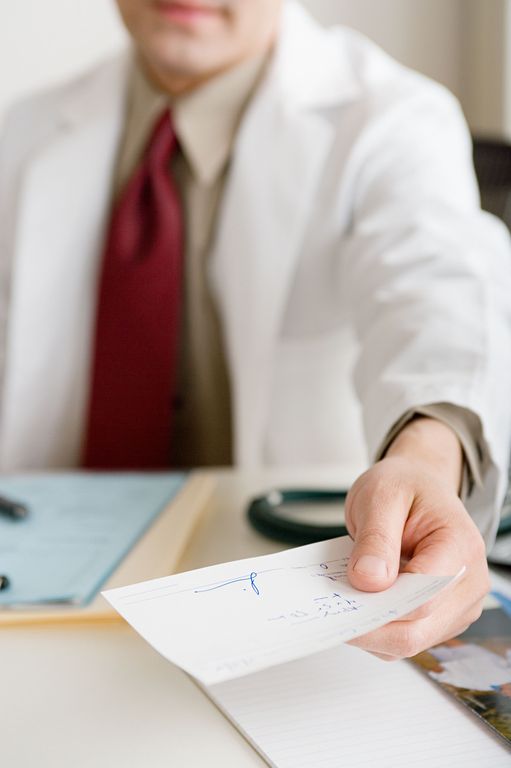
- All medicines come with a patient information leaflet. It is necessary to read this information leaflet carefully, as it specifies both the indications and the contraindications or precautions that have to be taken into account in each case.
- Keep medicines in their original packaging with their information leaflet.
- Check the expiry date of your medicines regularly.
- Once eyedrops have been opened, they must be stored in the fridge and they expire after one week.
- If you are taking a liquid form of medicine (syrup), use the measure or dosage device that comes with the medicine.
- Keep them out of reach of children.
- If you are pregnant or think you might be, do not take any medicine without consulting your doctor.
- If you are taking antibiotics:
- Antibiotics do not reduce fever or relieve pain. They are used to treat bacterial infections.
- Your doctor will indicate when and which antibiotic you need, and for how long, as each antibiotic treats a specific infection.
- Make sure that you finish the antibiotic treatment prescribed by your doctor (if you stop the treatment too soon, some bacteria can reproduce and become resistant), take your antibiotic at regular intervals and do not reduce the number of dosages to prevent the germs from multiplying, even if you feel better.
- After finishing the treatment, if there is some antibiotic left over, do not keep it as antibiotics lose their effectiveness over time. Take it to the chemist so that it is destroyed correctly.
- Sometimes, the doctor might prescribe an antibiotic in the event of a viral infection when there is a risk of bacterial overinfection due to the possibility of underlying diseases or in elderly people.
- If you are taking painkillers / analgesics:
- When you buy a medicine without a prescription, you need to take the possible side effects and contraindications into account. Never buy medicine that requires a prescription if you do not have one; obviously, the pharmacist should not sell a medicine without the corresponding prescription.
- When you buy medicine on your own initiative, it is important that you mention any special conditions to the pharmacist, such as if you might be pregnant, have high blood pressure, heart disease, chronic diseases such as diabetes, hemophilia, etc. since these can affect the reaction or absorption of the medicine.
- Painkillers relieve pain, but they do not cure the cause; therefore, it is advisable that you consult your doctor if you have a pain of unknown origin.
- In any case, if the pain persists, worsens or other symptoms appear despite using medicine, consult your doctor.
- Watch out for interactions that may occur between different medicines, as they can diminish or strengthen their effectiveness; always consult your doctor or pharmacist.
- If you are taking psychotropic drugs:
- If you are prescribed psychotropic drugs, they should be complemented with psychological therapy, as the medicine improves the symptoms but does not solve the cause of the malaise.
- In many cases, side effects can be confused with symptoms of the illness.
- Take into account that side effects are different for each person and that not everybody suffers them with the same intensity.
- Never take this type of medicine without the advice and monitoring of your doctor.
- Do not mix this type of medicine with alcohol or other drugs.
- Do not increase the medicine dose or suddenly stop taking the treatment of your own accord.
The medicine cabinet
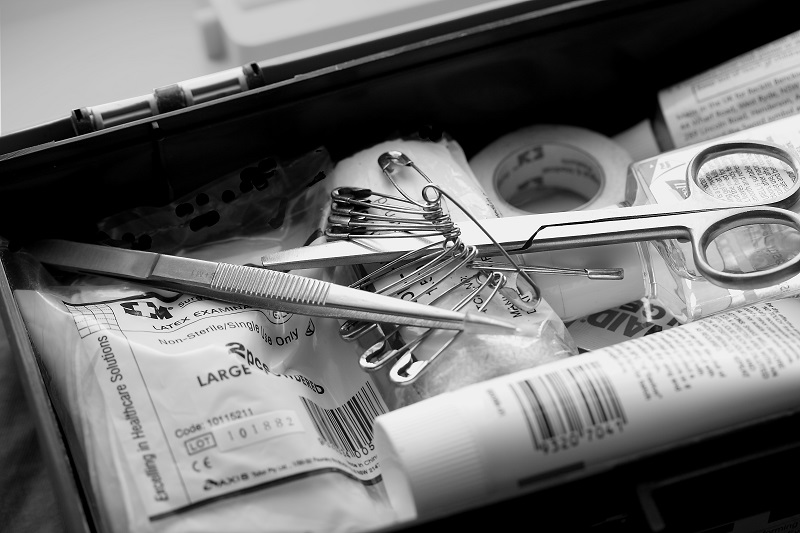
A medicine cabinet is a small cupboard, box, drawer, etc. that can be closed and is used to store medicine and first aid materials for small accidents or to alleviate some symptoms such as fever or pain.
A medicine cabinet must be protected from light, heat and moisture, be out of the reach of children and in a place known by those who may need to use it.
What must it contain?
- Analgesics, antipyretics for reducing fever and anti-inflammatory drugs
- Usual medication prescribed by the doctor
- Ointment to relieve insect bites
- First aid materials:
- Sterile gauze pads, cotton wool, bandages, tape, plasters
- Scissors and tweezers
- Alcohol, hydrogen peroxide
- Iodine-based antiseptic
- Emergency telephone number 112
